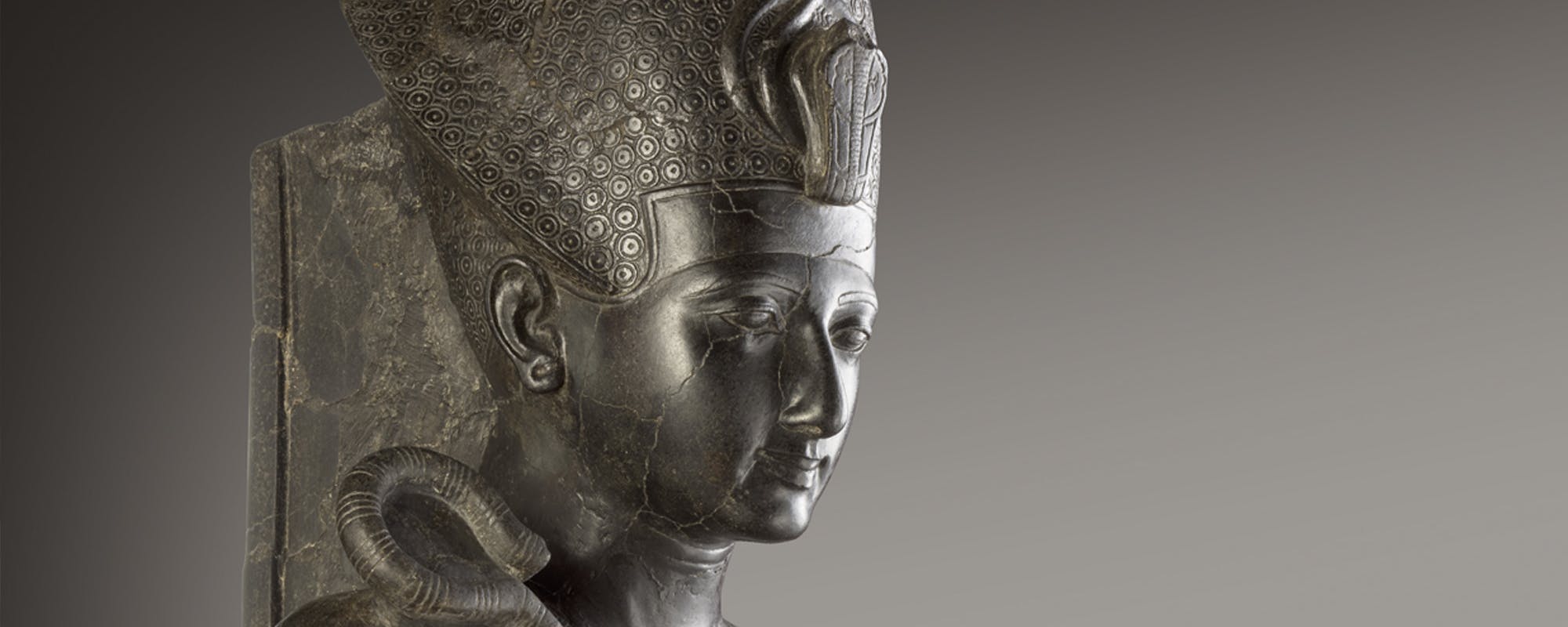the Gifts of the Nile
An outstanding exhibition of archeological finds from the Museo Egizio in Turin is on display in Forte dei Marmi until 2 April. Visitors can marvel at twenty-four small and valuable works only made accessible to the public on this rare occasion. For an unparalleled cultural experience
Words by Rita Bossi - Photography courtesy of Museo Egizio Torino
Originally, it served as a pier, a strategic mooring for the marble that was quarried in the nearby Apuan Alps. But the real Forte dei Marmi saw the light of day when Duke Leopold I decided to build a fortress against the Turkish incursions in 1788. Today, the Fortino, the hallmark of the vibrant pearl of Versilia, is hosting a new and fascinating exhibition: “The Egyptians and the Gifts of the Nile,” from 1 August 2024 to 2 April 2025. This extraordinary event stems from the collaboration with the prestigious institution of the Museo Egizio in Turin: the first-ever presentation organized by the Museo in Tuscany and the only external showing of the Museo itself on the bicentenary of its foundation.
A captivating journey back in time to the world of ancient Egypt awaits visitors in the exhibition halls of the Fortino of Leopold I – from the Predynastic Era (3600 – 3200 BC) to the Greek-Roman Age (330 BC – 642 AD) – offering an unrivaled cultural experience. Curated by Paolo Marini, a scientific expert for the Museo Egizio’s traveling exhibitions, and supervised by President Evelina Christillin and Director Christian Greco, the show was co-promoted by Fondazione Villa Bertelli and the Municipality of Forte dei Marmi. It features twenty-four remarkable finds from the collection of the Museo Egizio in Turin, the oldest museum in the world entirely dedicated to the Nilotic civilization. The Museo’s itinerary does not include such finds, which can, therefore, be admired only in Forte.
Exhibits of various kinds, artifacts, and carefully preserved archeological evidence are presented, as well as a unique funerary mask from Roman times, a perfect replica of the deceased’s face made of cartonnage and earmarked for the mummy’s magical protection. Among the exhibits on display are vases, stelae, amulets, papyri, fragments of architectural elements, statuettes of Egyptian gods and goddesses, objects of ordinary use, and ritual artifacts from daily life. A striking model of a boat made of plastered and painted wood from the grave goods of the First Intermediate Period (between 2118 and 1980 BC) stands out and depicts the deceased’s journey to the holy city of Abydos. The complete set of four alabaster canopic jars of Ptahhotep is also part of the Museo’s Gallery of Material Culture. They date from the Third Intermediate Period (1076 – 722 BC) and are sealed with lids illustrating the Sons of Horus with zoomorphic heads and were used to store the organs of the extinct person separately. They embody a pivotal aspect of the mummification process and the Egyptian funerary cult. Today, it is our obligation and duty to preserve, protect and enhance these precious gifts.
Moreover, infographics and multimedia installations round out the itinerary exhibition with historical and scientific insights into the artifacts and various periods of ancient Egypt. The voice of fortemarmino writer Fabio Genovesi accompanies visitors through this gripping and accessible experience with a special audio guide available in Italian and English. The show also includes a series of lectures, seminars, side events, educational workshops and guided tours in collaboration with Villa Bertelli and the Museo Egizio.
A signature piece of the exhibition, outside the Fortino in Piazza Garibaldi, is the accurate 2:1 scale reproduction of the monumental statue of Ramesses II, one of the Museo Egizio’s iconic exhibits, a permanent artifact in Turin. At nearly four meters high, the imposing replica strongly evokes the grandeur of Egyptian art and is an astounding example of its immortal beauty.
The mayor of Forte dei Marmi, Bruno Murzi, is thrilled about this tremendous opportunity that the town is experiencing as a hotspot of history and culture. The showing represents much more than a simple display of objects; it is an unforgettable cultural experience, a glimpse of the rich heritage preserved by the Museo Egizio in Turin. It also marks Forte dei Marmi’s first step towards a decisive enhancement of its cultural activities, not only during the summer season. Hosting the ancient Egyptians as an exposition is undoubtedly out-of-the-ordinary for a “frivolous” seaside town, which only adds to its appeal.
the season’s other exhibitions
A summer of diverse exhibitions in Forte dei Marmi is not to be missed, including the notable exposition organized in collaboration with the Museo Egizio of Turin. Following the tribute to Walter Lazzaro and the solo show by Giuseppe Maiorana, which wrapped up in early June, the Fortino in Piazza Garibaldi is now hosting from 22 June to 14 July the “Dream Role” event exhibition, featuring the photographs of British filmmaker Peter Chelsom, curated by Beatrice Audrito (here our interview with the director).
Excitement is mounting at Villa Bertelli for the grand opening of the new Museum of the Quarto Platano, a momentous event that will display works and testimonies on the extraordinary season of the distinguished cultural gathering (in the photo below right Enrico Pea, Carlo Carrà and Eugenio Montale). The ceremony is set for 11 a.m. Saturday, June 29. Before that date, the Villa’s second floor will be home to the fine exhibition sponsored by the Società di Belle Arti entitled “Da Nomellini a De Chirico. Luci e suggestioni da una collezione privata” (June 1-30; below left the work “Mrs. Ojetti in the rose garden” by Oscar Ghiglia), followed by the “Hollywood e la Versilia” showcase curated by Marco Fubiani (5-31 July). Lastly, from 10 August to 1 September, “Eugenio Montale a Villa Fasola,” will be on display and curated by Mario Luca Giusti.
Peter Chelsom, "The actress Ludovica Martino as Cleopatra"
